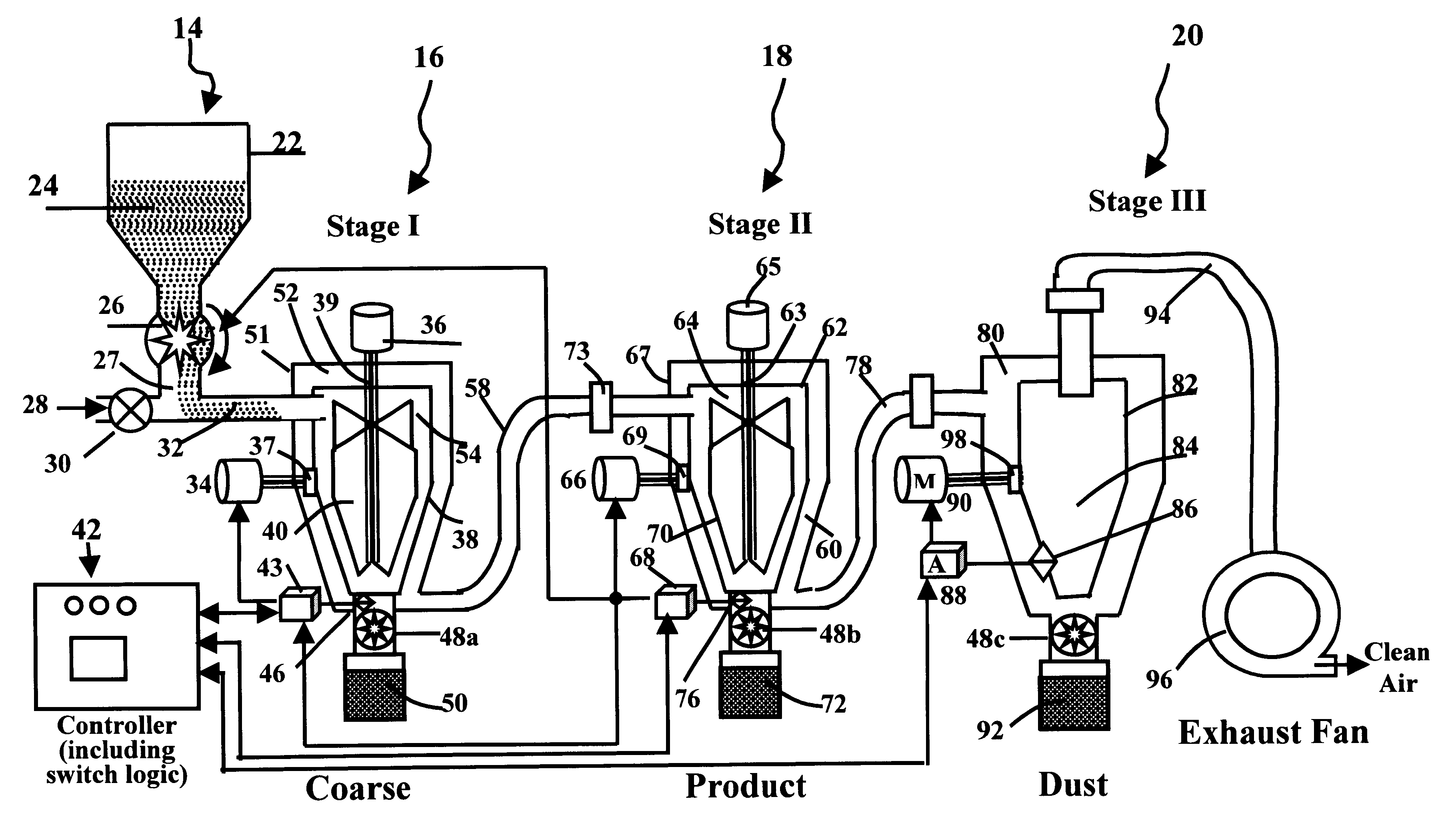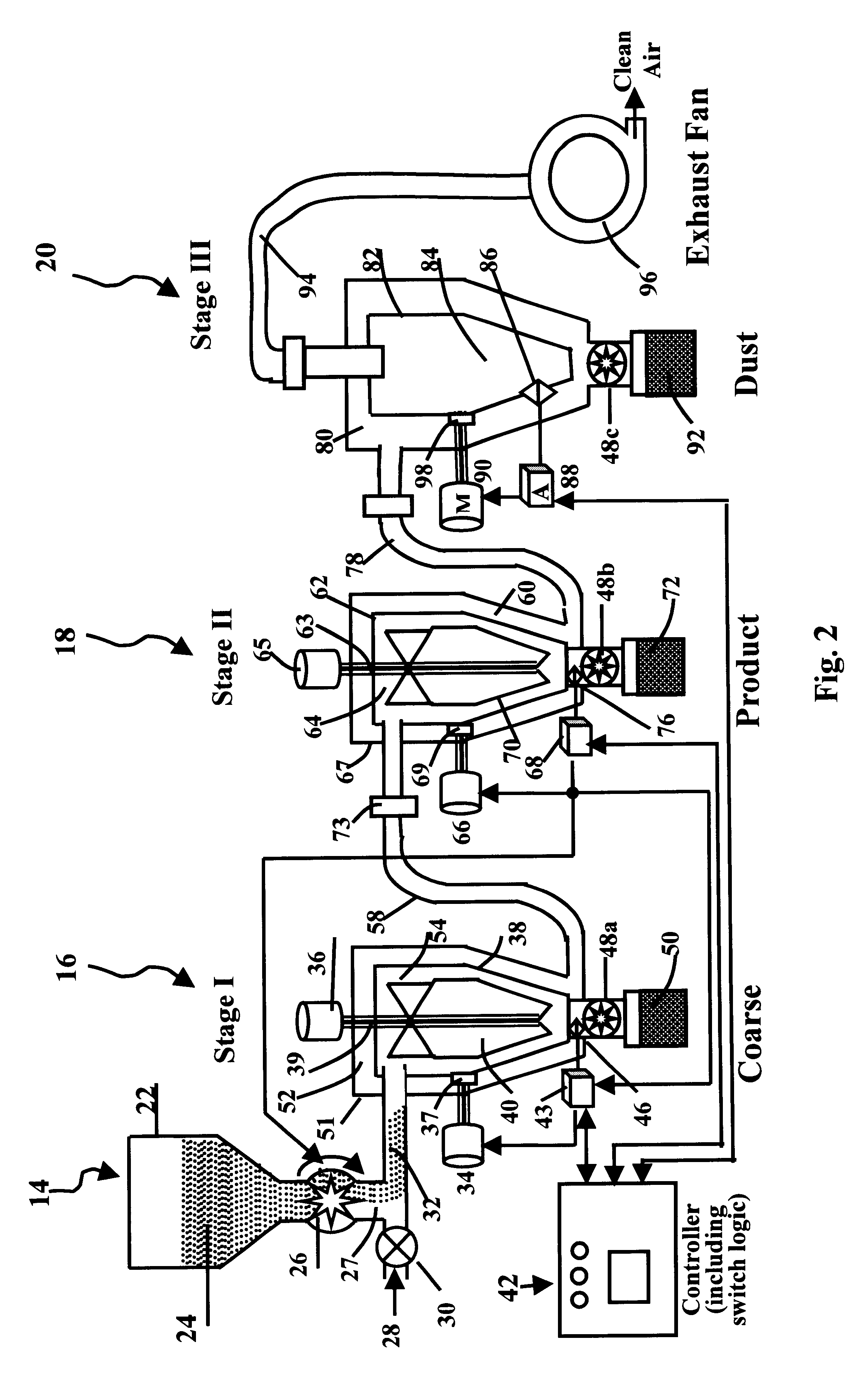Dynamic filtration method and apparatus for separating nano powders
a filtration method and nano powder technology, applied in the direction of filtration separation, gas current separation, separation process, etc., can solve the problems of inability to achieve the classification of nanometer-sized particles of an ultra-thin range, and inability to achieve the classification of nanometer-sized particles
- Summary
- Abstract
- Description
- Claims
- Application Information
AI Technical Summary
Problems solved by technology
Method used
Image
Examples
example i
In most of the cases, nano powders produced in current technologies do not have a uniform size. Instead, a powder normally has a size distribution, e.g., between 5 nm and 100 nm. For the purpose of illustration, assume that a nano powder sample has most of its particles being in a relatively narrow size range, e.g., around 80+ / -20 nanometers (60 nm<d<100 nm). In this case, this size of 80 nm is called the average size. Only a small amount of the particles would deviate far away from the average size, e.g. 60 nm or smaller and 100 nm or bigger. Hence, the separator device will be required just to collect the powder particles near the average size and remove the particles whose size is either above a specified value (e.g., 90 nm) or below another specified value (e.g., 70 nm). Such a device having an accuracy of + / -10 nm thus far has been non-existing.
The present invention, however, provides a method and apparatus that is capable of meeting or exceeding this stringent powder separatio...
example ii
In some industrial cases, the nano powders have a wide size distribution, e.g., from 20 nm to 180 nm. Assume that the nano powder particles need to be classified into different size ranges, such as 20-30 nm, 30-40 nm, . . . , and 170-180 nm. A separator has been designed for this purpose. As schematically shown in FIG. 4, the whole system consists of 16 stages of separating units, in addition to a materials-feeding unit and a switch logic control unit. The configurations and functions of these 16 separating units and the feeding unit are similar to those described earlier in the three-stage system.
The nano powder particles are fed to the Stage 1 unit from the feeding unit and the coarse particles are removed and relocated to the container located under the Stage 1 unit. Then, the particle stream enters the Stage 2 unit with the fine particles being sorted out and retained in the container located under the bottom of the Stage 2 unit. The finer particles will be collected in the cont...
PUM
| Property | Measurement | Unit |
|---|---|---|
| diameter | aaaaa | aaaaa |
| size | aaaaa | aaaaa |
| size | aaaaa | aaaaa |
Abstract
Description
Claims
Application Information
 Login to View More
Login to View More - R&D
- Intellectual Property
- Life Sciences
- Materials
- Tech Scout
- Unparalleled Data Quality
- Higher Quality Content
- 60% Fewer Hallucinations
Browse by: Latest US Patents, China's latest patents, Technical Efficacy Thesaurus, Application Domain, Technology Topic, Popular Technical Reports.
© 2025 PatSnap. All rights reserved.Legal|Privacy policy|Modern Slavery Act Transparency Statement|Sitemap|About US| Contact US: help@patsnap.com



